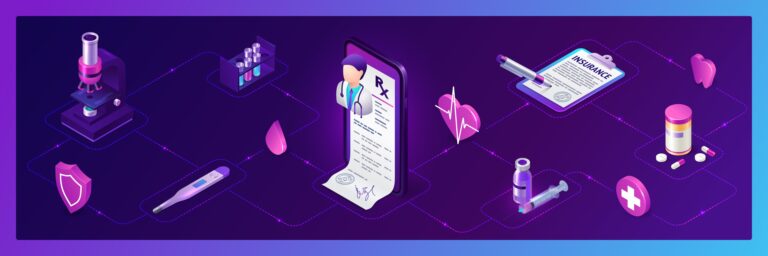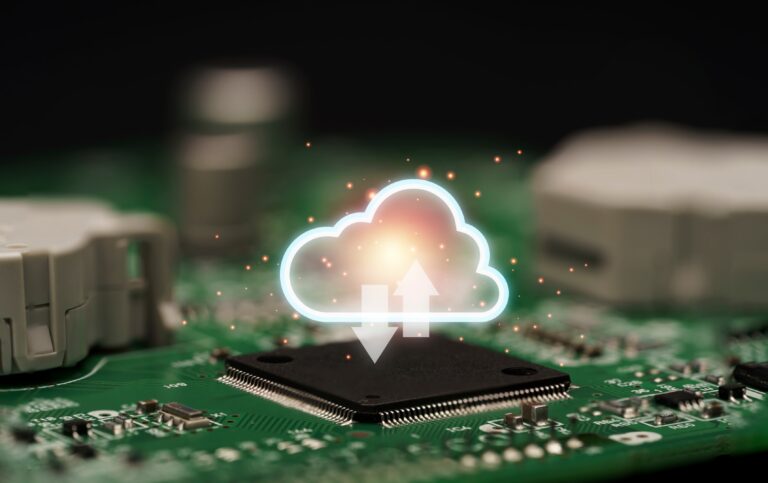In today’s digital age, data security is paramount for businesses that entrust sensitive information to vendors. SOC 2 compliance is a well-regarded framework that assesses a vendor’s ability to securely manage sensitive data. Developed by the American Institute of Certified Public Accountants (AICPA), SOC 2 stands for Service Organization Controls 2. It’s not a certification, but rather a verification process achieved through a rigorous audit.
I. Understanding the SOC 2 Compliance Framework

SOC 2 is designed for organizations that provide services, encompassing a wide range of businesses like cloud providers, data storage companies, payroll processors, and many others. By adhering to the SOC 2 framework and achieving compliance, these organizations demonstrate their commitment to data security best practices. This framework provides a defined set of criteria that guides the implementation of security controls to protect personal data throughout its lifecycle, from system processing (covered in Section III B) to storage and transmission. Ultimately, achieving SOC 2 compliance builds trust with customers, assuring them their information is protected according to industry-leading standards.
Moreover, implementing secure development practices throughout the development lifecycle is crucial for robust data protection. This aligns withthe principles of DevSecOps, which emphasizes collaboration between development, security, and operations teams.
Why is SOC 2 Compliance Important?
There are two key reasons why SOC 2 compliance is crucial for service organizations:
- Increased Customer Trust and Confidence: Customers entrust service providers with valuable data, and ensuring its security is critical for building trust. Achieving SOC 2 compliance signifies a service organization’s dedication to industry-leading security best practices. This fosters confidence in potential and existing customers, making them more likely to choose your services.
- Competitive Advantage in Data-Driven Markets: Data security is a top priority in today’s competitive market, especially for businesses in highly regulated industries. Many organizations require their service providers to be SOC 2 compliant. By achieving compliance, you position your service organization as a leader in security best practices, gaining a significant edge over competitors who haven’t undergone this rigorous verification process.
By achieving SOC 2 compliance, service organizations demonstrate their commitment to protecting client information and building trust with their clients. This not only enhances their reputation but also provides a competitive advantage in the marketplace.
II. Core Principles of SOC 2: Protecting Customer Data Through Security Controls

This section dives into the heart of SOC 2 compliance, exploring how it ensures client information security through robust security controls. Established by the American Institute of Certified Public Accountants (AICPA), the Trust Services Criteria (TSC) form a comprehensive framework. These criteria assess a vendor’s ability to implement controls that effectively safeguard client information.
A. Data Security: Safeguarding Customer Data from Unauthorized Access and Breaches
The first principle, Data Security, focuses on protecting client information from unauthorized access, data breach, and other security threats. Data breaches can have devastating consequences, highlighting the importance of robust security controls. Data storage companies stick to a multi-layered approach to security, utilizing various security controls to safeguard sensitive information.
- Access Controls and Data Protection Measures: This involves establishing clear access control policies that restrict unauthorized access to client’s data. Techniques like multi-factor authentication and user permissions ensure only authorized personnel can access specific data sets based on their job roles and the “need to know” principle.
- Risk Management Strategies: A proactive approach to security involves identifying and mitigating potential security risks that could lead to data breaches. Vendors conduct regular risk assessments to pinpoint vulnerabilities and apply appropriate security controls to mitigate them. This ongoing process helps to minimize the likelihood of security incidents.
B. Availability: Ensuring Customer Data Accessibility
Availability ensures that systems processing client information are accessible and functional when needed by authorized users. Disruptions to system availability can significantly impact businesses, highlighting the importance of this principle. Service organizations implement measures like:
- Business Continuity and Disaster Recovery Plans: These plans outline the steps and procedures for recovering from disruptions caused by natural disasters, power outages, or other unforeseen events. This helps to minimize downtime and ensures business continuity in the event of an incident.
- System Uptime and Performance Metrics: By continuously monitoring system uptime and performance, service organizations can identify potential issues and take corrective actions before they disrupt operations. This proactive monitoring ensures smooth system operation and minimizes the risk of data inaccessibility.
C. Processing Integrity: Ensuring Accurate and Timely Data Throughout Processing
The third trust services criteria, Processing Integrity, focuses on the accuracy, completeness, and timeliness of data throughout processing. Errors in data processing can have serious consequences, so vendors implement robust procedures to ensure data integrity.
- a. Data Accuracy and Completeness Procedures: These procedures guarantee the accuracy and completeness of client information from the start. This may involve data validation checks to identify and rectify errors, alongside data cleansing processes to eliminate inconsistencies or duplicate entries. Maintaining accurate and complete information throughout its lifecycle is essential for reliable decision-making and efficient operations.
- b. Change Management Procedures: Any modifications to systems or processes that could potentially compromise data integrity are managed through well-defined change management procedures. These procedures ensure that changes are thoroughly reviewed, tested, and implemented in a controlled manner to minimize risk and disruption.
D. Confidentiality: Protecting the Privacy of Customer Data, Including PII
The principle of Confidentiality safeguards the privacy of client information, including Personally Identifiable Information (PII). PII refers to data that can be used to identify an individual, such as names, addresses, social security numbers, and financial information. Service organizations have a responsibility to ensure that only authorized personnel can access this highly sensitive data.
- a. Information Classification and Access Restrictions: Data is classified based on its sensitivity level. This allows for the implementation of appropriate access restrictions, ensuring that only authorized personnel with a legitimate “need to know” have access to specific data sets, including PII. This minimizes the risk of unauthorized access and protects sensitive customer information.
- b. Data Encryption Techniques: An additional layer of security is provided through data encryption. Sensitive data, especially PII, is encrypted both at rest (when stored on servers) and in transit (when transmitted over networks). This encryption process renders the data unreadable by unauthorized individuals even if intercepted, further protecting customer privacy.
E. Privacy: Responsible Collection, Use, and Disposal of Customer Data
The final trust services criteria, Privacy, addresses how client information is collected, used, disclosed, retained, and disposed of. Service organizations must comply with relevant legal and regulatory requirements regarding data privacy.
- a. Data Collection and Use Policies: Clear and transparent policies govern what data is collected from customers, how it’s used, and for what purposes. These policies ensure informed consent by providing customers with a clear understanding of how their data is being handled. This builds trust and transparency in the customer relationship.
- b. Customer Consent and Data Disposal Practices: Service organizations obtain explicit consent from customers before collecting and using their data. This ensures customers have control over their information. Furthermore, data disposal practices guarantee that data is securely erased when it’s no longer required, preventing unnecessary data retention and minimizing privacy risks.
By adhering to these five trust services criteria, cloud providers demonstrate a comprehensive approach to data security. This commitment to protecting customer data builds trust with their clients and strengthens their competitive advantage in today’s data-driven marketplace.
III. Achieving SOC 2 Compliance: Understanding SOC 2 Reporting Types

SOC 2 compliance is a journey, and achieving it involves understanding the different reporting options available. These reports, known as SOC 2 Type 1 and SOC 2 Type 2, differ in their scope and level of detail regarding a service organization’s controls over customer data.
A. SOC 2 Type 1 Report: A Point-in-Time Description of Controls
A SOC 2 Type 1 report provides a point-in-time snapshot of a service organization’s controls relevant to SOC 2 compliance. It’s prepared by an independent auditor who reviews the organization’s design of relevant controls and describes them in the report. This report offers assurance that the security controls have been designed appropriately to address the trust services criteria.
Key characteristics of a SOC 2 Type 1 report:
- Focuses on the design of controls at a specific point in time.
- Does not assess the operating effectiveness of the controls.
- Provides a high-level overview of the organization’s SOC 2 compliance posture.
- May be suitable for organizations in the early stages of their SOC 2 journey or those with low-risk customer data.
B. SOC 2 Type 2 Report: In-depth Examination of Controls over a Period
A SOC 2 Type 2 report offers a more comprehensive assessment compared to a Type 1 report. In addition to describing the design of controls, a Type 2 report also evaluates the operating effectiveness of those controls over a defined period of time. An independent auditor tests the controls to determine if they are functioning as designed and operating effectively to achieve the objectives of the trust services criteria.
Key characteristics of a SOC 2 Type 2 report:
- Provides a more in-depth examination of controls, including their design and operating effectiveness.
- Evaluates the controls over a defined period of time.
- Offers a higher level of assurance regarding the organization’s SOC 2 compliance.
- May be required by certain customers or industry regulations.
Focus on System Processing in SOC 2 Type 2 Reports:
It’s important to note that a SOC 2 Type 2 report specifically evaluates the operating effectiveness of controls over system processing of customer data. This means the audit goes beyond simply verifying the existence of controls and delves deeper to assess how effectively they function in safeguarding customer data throughout processing within the organization’s systems.
Choosing the right SOC 2 report type depends on your specific needs and risk profile. A Type 1 report provides a good starting point, while a Type 2 report offers a more thorough assessment with a focus on the ongoing effectiveness of controls.
IV. Additional Resources
A. Who Performs a SOC 2 Audit: Independent Third-Party Auditors

SOC 2 audits are conducted by independent third-party auditors. These auditors are typically Certified Public Accountant (CPA) firms accredited by the American Institute of Certified Public Accountants (AICPA). Their accreditation ensures they possess the necessary expertise and experience to evaluate a service company’s controls against the rigorous SOC 2 trust service criteria.
Here’s why involving a third-party auditor is crucial:
- Objectivity: An independent auditor provides an objective assessment, free from potential biases within the organization.
- Expertise: Accredited CPA firms possess specialized knowledge of SOC 2 requirements and the ability to thoroughly evaluate a service organization’s security posture.
- Credibility: A report issued by a reputable third-party auditor enhances the credibility of your SOC 2 compliance efforts for your clients and stakeholders.
The selection of the right third-party auditor is a critical step in the SOC 2 journey. Look for an auditor with experience in your industry and a proven track record of conducting successful SOC 2 audits.
B. Is SOC 2 the Same as ISO 27001?
While both SOC 2 and ISO 27001 are recognized benchmarks for information security, they utilize distinct security criteria to achieve their goals:
Focus:
SOC 2 focuses specifically on a service organization’s controls relevant to customer data security, aligning with the five trust service criteria (security, availability, processing integrity, confidentiality, and privacy). ISO 27001, on the other hand, has a broader scope, encompassing an organization’s overall information security management system (ISMS).
Compliance vs. Certification:
SOC 2 is not a certification but rather a verification process that results in a report. ISO 27001 can be achieved through certification, demonstrating that an organization’s ISMS meets the required standards.
Reporting:
SOC 2 offers two reporting options (Type 1 and Type 2) with varying levels of detail. ISO 27001 certification typically involves a single report outlining the organization’s ISMS.
While both SOC 2 and ISO 27001 address information security, they differ in their primary focus. SOC 2 provides a targeted assessment specifically designed to ensure the effectiveness of controls that protect customer data. ISO 27001, on the other hand, offers a broader framework that encompasses an organization’s entire information security posture. Businesses seeking a well-rounded security strategy can pursue both SOC 2 compliance and ISO 27001 certification.
V. Next Steps: Preparing for a Successful SOC 2 Audit
Achieving SOC 2 compliance is a significant accomplishment, but the journey doesn’t end there. Here are some key steps to take as you prepare for a SOC 2 audit:
A. Gap Assessment: Identifying Areas for Improvement on the Path to SOC 2 Compliance
The first step on the SOC 2 compliance journey is a comprehensive gap assessment. This assessment acts as a roadmap, evaluating your current security practices and controls against the rigorous five trust services criteria established by the American Institute of Certified Public Accountants (AICPA). These security criteria encompass essential security principles for cloud providers that store customer data , including financial reporting information (although SOC 2 is not specifically focused on financial reporting), but rather on the security of the data itself.
Here’s how a gap assessment helps achieve SOC 2 compliance:
- Identifying Gaps: The assessment compares your existing controls against the trust service criteria (TSC). This helps pinpoint areas where your controls may not be fully aligned, potentially leaving your organization vulnerable to a data breach or other security incidents.
- Risk Mitigation Strategy: By identifying these gaps, you can develop a risk assessment plan to address them. This may involve strengthening existing controls, creating entirely new ones, or updating policies and procedures to effectively mitigate potential risks.
- Building a Foundation for Compliance: A thorough gap assessment provides a clear understanding of your current security posture. This forms the foundation for demonstrating compliance with the SOC 2 criteria in a future audit.
B. Developing and Implementing Internal Controls: Building a Secure Environment for Client Data
Based on the findings of the gap assessment, you’ll embark on the crucial step of developing and implementing internal controls. These controls are the mechanisms that safeguard your client data throughout its lifecycle within your systems. Well-defined and documented controls are essential for providing assurance to auditors and, ultimately, your clients that their data is protected according to industry standards.
Here’s a breakdown of how internal controls are developed and implemented for SOC 2 compliance:
- Addressing Identified Gaps: The gaps identified in the assessment become the starting point. You’ll need to develop service organization relevant controls to address these specific areas of weakness.
- Control Design and Implementation: This stage involves designing, documenting, and implementing the necessary controls. This may encompass a wide range of measures, such as access controls using two-factor authentication to prevent unauthorized access, data encryption to protect confidential information both at rest and in transit, and regular security awareness training for company personnel to minimize the risk of human error.
- Alignment with Trust Service Categories: Remember, the five SOC 2 trust service categories (Security, Availability, Processing Integrity, Confidentiality, and Privacy) provide the framework for control development. Each control you implement should contribute to achieving the objectives of one or more of these categories.
- Meeting Reporting Requirements: Depending on whether you pursue a SOC 2 Type 1 or Type 2 report, the controls you implement will be reviewed by an independent auditor. A Type 1 report focuses on the design of the controls, while a Type 2 report assesses their operating effectiveness over a defined period. In both cases, having well-defined and documented controls is essential for proving compliance with the SOC 2 criteria.
C. Selecting and Engaging a Qualified SOC 2 Auditor
Choosing the right SOC 2 auditor is critical for a successful and efficient audit process. Here’s what to consider when selecting your auditor:
- Accreditation and Experience: Look for an independent CPA firm accredited by the AICPA with a proven track record of conducting SOC 2 audits. Experience in your specific industry is also a plus, as they’ll understand the unique risks and regulations relevant to your business.
- Auditor Independence: The auditor must be completely independent of your organization to ensure an objective assessment.
- Understanding of SOC 2 Reporting: Ensure the auditor has a deep understanding of both SOC 2 Type 1 and Type 2 reports and can advise you on the best option for your needs.
- Communication and Client Service: Choose an auditor who prioritizes clear communication throughout the process. They should be able to explain complex concepts in a clear and understandable manner and be responsive to your questions and concerns.
- Evidence Collection Process: A qualified auditor will have a well-defined process for collecting evidence to support their assessment of your controls. This may involve reviewing documentation, conducting interviews with personnel, and observing control activities.
Partnering with a qualified SOC 2 auditor is an investment in your organization’s security posture. The right auditor will guide you through the SOC 2 compliance journey, ensuring a smooth audit process and a successful outcome.
Additional Tips:
- Seek professional guidance: Consider consulting with experienced professionals who can help you navigate the SOC 2 compliance process.
- Maintain ongoing compliance: SOC 2 compliance is an ongoing process. Regularly review and update your controls to ensure they can protect customer data effectively.
- Communicate effectively: Clearly communicate your SOC 2 compliance efforts to your customers and stakeholders. This demonstrates your commitment to data security and builds trust.
By following these steps and remaining committed to data security, you can successfully navigate the SOC 2 audit process and achieve a strong security posture for your organization.





